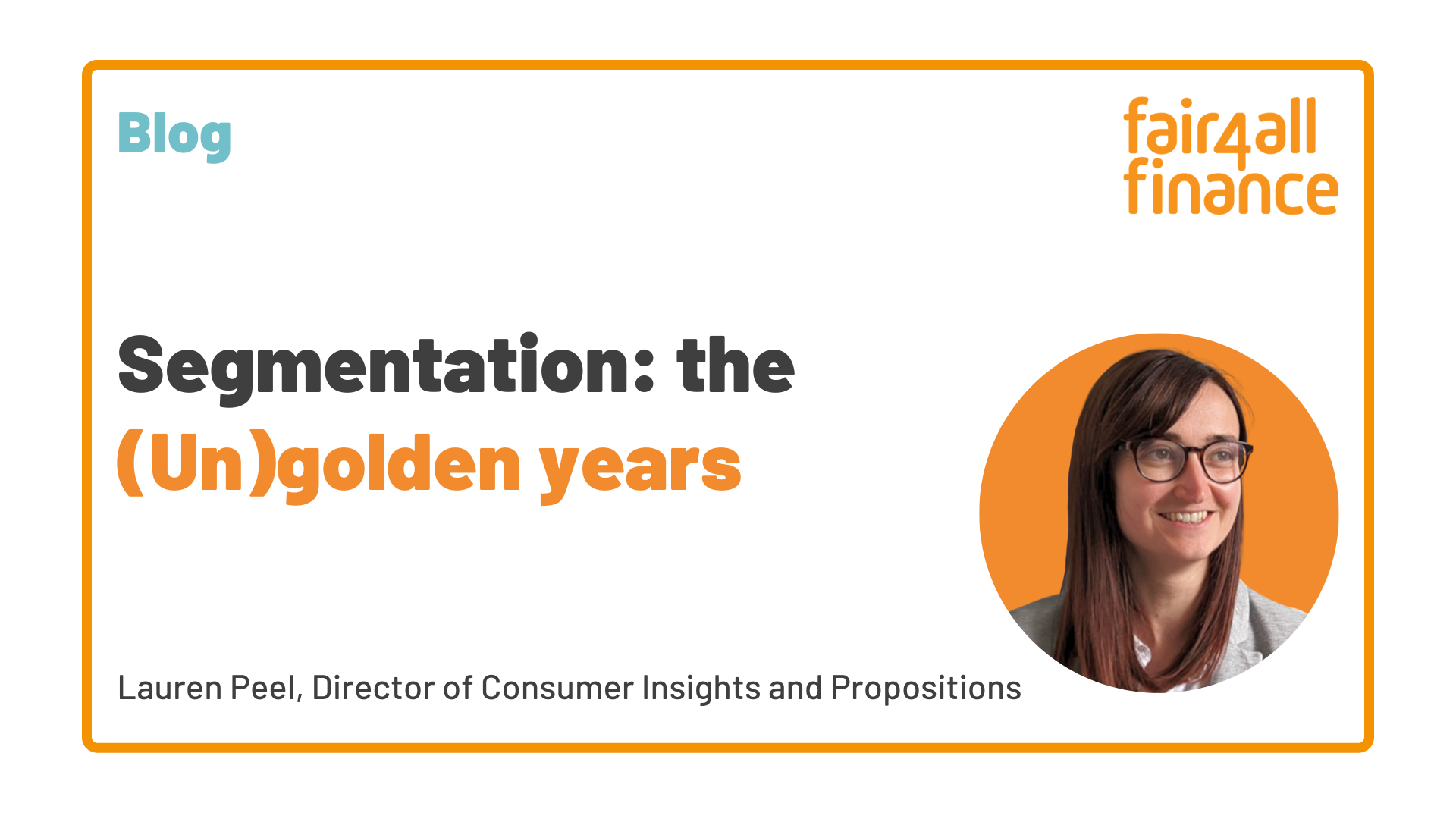Segmentation: the (Un)golden years
In the second of our blog series on Fair4All Finance’s segments, Lauren Peel takes a deeper look at the needs of the 3 million people in (Un)golden Years
In an ideal world, retirement is something that everyone would look forward to and be well prepared for. In reality, there are at least 2m pensioners living in poverty in the UK.
That includes many in our (Un)golden years segment which is the oldest of our six segments of people in financially vulnerable circumstances. It includes both pre- and post- retired people, which means a wide range of financial needs.
For the majority, it’s too late to be talking about increasing retirement incomes, but there are still actions that organisations can take to improve the financial resilience of people in this segment.
(Un)golden years: What do you need to know?
- 2 in 5 in this segment are aged 45-54, and 2 in 5 aged 65+
- Housing tenure is varied (see chart below). 1 in 4 own outright, 1 in 4 still have mortgage commitments. And 1 in 3 rent from a local authority or housing association
- 38% are retired, and 46% are still in work
- 1 in 3 have financially dependant children (both in and outside the home)
- 1 in 4 have no savings – while this is lower than other segments, it’s worryingly high for a group that will struggle to increase earnings and rebuild savings
Diving deeper into their financial needs
1 Ensuring access to eligible benefits and financial support
In our interviews, we consistently saw independence as a theme: “I’m very independent I don’t want to be going cup in hand to people.” There is a perception that others are struggling more, that they’re getting by, and it’s just the way it is. This was true even where people were struggling to afford heating and food.
One of the consequences of this is that pension credit is underclaimed, with an estimated 880,000 eligible households not claiming £2.1bn. This is also linked to extra Cost of Living Support, and access to other benefits such as council tax reduction and housing benefit.
How can organisations enable more customers to take up pension credit? Is there a role for open banking to help identify which customers are likely to be eligible in order to deliver targeted messaging? And what behavioural nudges can be used to encourage take-up?
2 Assumptions around retirement and later life planning
It’s easy to think that at the point of retirement, the majority of people will own their own house. It’s a good safety net even if pension pots are small, and provides an option to downsize or release equity in later life.
However, we know this isn’t the case for over a million people. This is a problem both for those approaching retirement, and those in earlier stages of their financial lives who also may never own a property.
Are pension calculators, and retirement planning tools, designed for mid-wealth customers or do they take into account a broader range of needs? What other support is needed for people to cope with rising housing costs?
3 As savings fall, credit needs may increase
Another theme that came through both in the data and in conversations was a real reluctance to turn to credit. Credit was seen as something that leads to stress and anxiety, and should be avoided. This segment is all about living within their means. Only 1 in 5 say it’s okay to borrow money from family and friends, almost half the amount compared to the rest of our segments. And only 1 in 10 would consider taking out a loan.
And, at the same time, many will be financially supporting family members, and of course seeing their own costs increase. This means that for one off expenses such as boiler repairs, roof fixes, car breakdowns, there may be a need to use credit to spread the costs.
Some may be looking to access credit for the first time in many years after spending a long time living carefully (but comfortably) within their means.
There are two things that should be considered:
- Which credit products are suitable for this audience? Noting this is likely to be for one-off, large expenses rather than cyclical borrowing.
- How can we overcome the stigma of lending where it’s the right thing to do, and the alternative is going without essential items?
What next?
Our segmentation can help financial services providers further understand different groups, identify who they are serving well today and where there is the opportunity to serve different customer groups. This could not only help build the financial resilience of different segments, but also help organisations to diversify their customer base.
It’s also a starting point – and (Un)golden years is one of the segments we have the least insight on today. If you’re an organisation with expertise in this area, and are looking to do more to improve propositions for this segment, it would be great to understand more on the gaps and opportunities to serve them.
